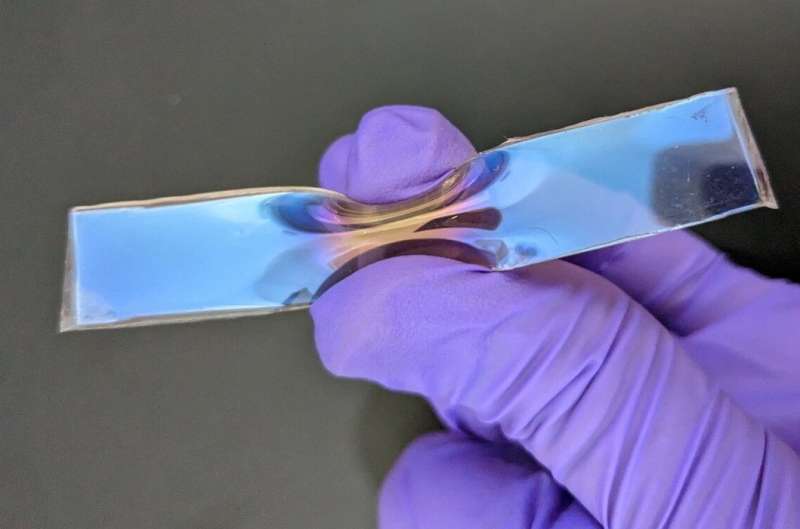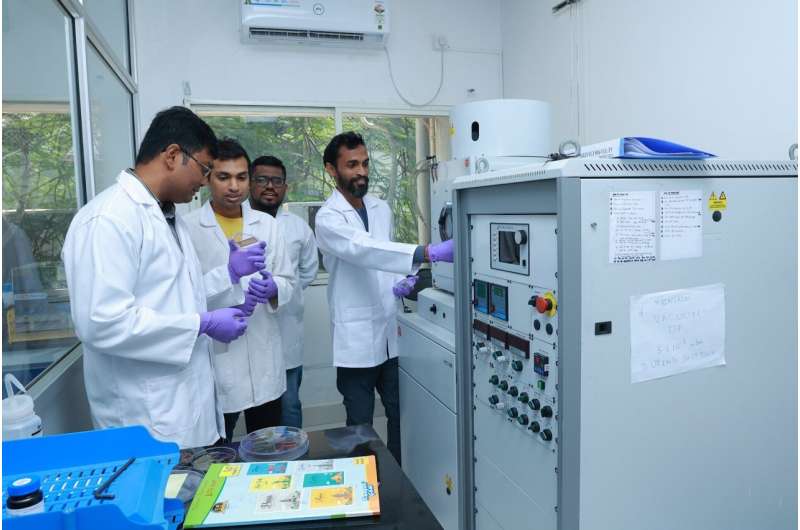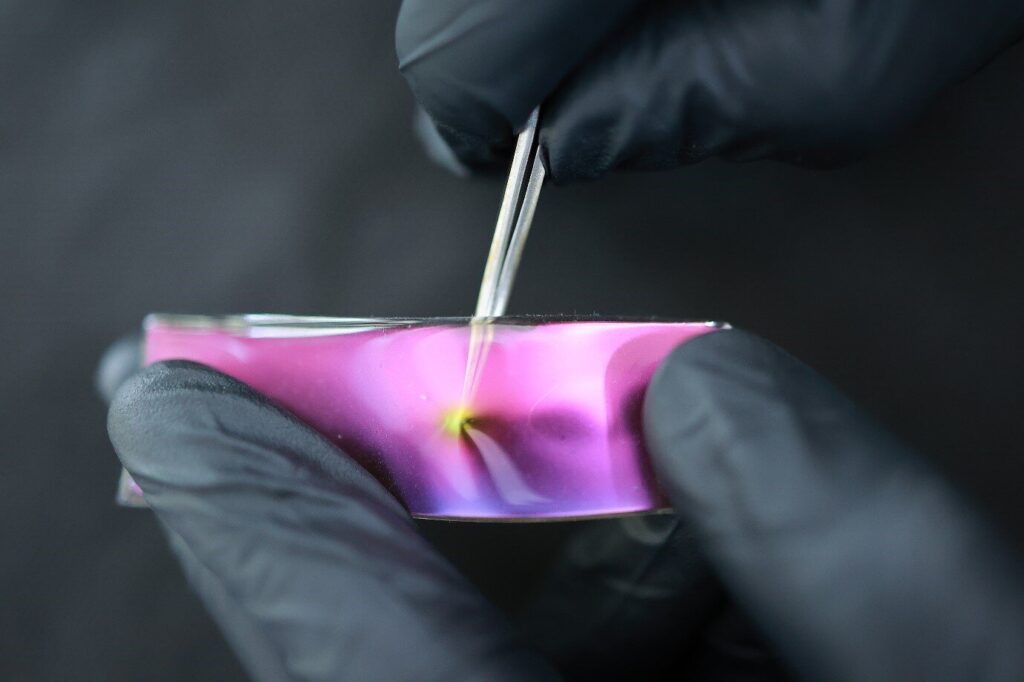Researchers at the Indian Institute of Science (IISc) have developed flexible films that exhibit bright colors purely by virtue of their physical structure, without the need for any pigment. When stretched, the films exhibit a change in color as a response to the mechanical deformation.
To design these films, the team devised a novel cost-effective and scalable single-step technique that involves evaporating gallium metal to form nano-sized particles on a flexible substrate. Their method allows the simultaneous fabrication of multiple structural colors responsive to mechanical stimuli.
The team has also shown how these films can be used for a variety of applications, from smart bandages and movement sensors to reflective displays.
“This is the first time that a liquid metal like gallium has been used for photonics,” says Tapajyoti Das Gupta, Assistant Professor in the Department of Instrumentation and Applied Physics (IAP), and corresponding author of the study published in Nature Nanotechnology.
Some natural objects like gemstones, mollusk shells or peacock feathers are inherently colorful. Their colors emerge from the interaction of light with micro- or nano-structures arranged periodically, such as tiny silica spheres in opal, calcium carbonate-based platelets in mollusk shells, and segmented ribbons atop cylindrical structures in peacock feathers.

Nature-inspired structurally colored materials have found broad applications in displays, wearable electronics, visual sensors, and anti-counterfeiting tags. In recent years, scientists have been trying to design materials that can change color in response to an external mechanical stimulus.
The IISc team began experimenting with gallium, which has not been explored for such applications because its high surface tension hinders the formation of nanoparticles. Gallium is a liquid metal at room temperature and its nanoparticles have been shown to have strong interactions with electromagnetic radiation.
The process developed by the team achieves the feat of overcoming the barrier of surface tension to create gallium nanoparticles, by cleverly using the properties of a substrate called polydimethylsiloxane (PDMS), a biocompatible polymer.
When the substrate was stretched, the researchers noticed something unusual. The material started showing different colors depending on the strain. The researchers theorized that the array of deposited gallium nanoparticles interacts with light in specific ways to generate the colors.
To understand the role of the substrate in color generation, the team developed a mathematical model.

PDMS is a polymer made by mixing two liquid-like components—an oligomer and a cross-linker—which react with each other to form a solid polymer. What the researchers found is that the unreacted portion of oligomer, which is still in a liquid state, played a crucial role in stabilizing the formation of gallium nanoparticles on the substrate.
When this substrate is then stretched, the liquid-like oligomers seep into the gaps between the nanoparticles, changing the gap size and their interaction with light, resulting in the observed change in coloration. Experiments carried out in the lab confirmed the model’s predictions. By tuning the ratio of the oligomer content to the cross-linker, the researchers obtained a gamut of colors.
“We show that the PDMS substrate not only holds the structure, but also plays an active role in determining the structure of gallium nanoparticles and resulting coloration,” says Renu Raman Sahu, Ph.D. student in IAP and lead author. Even after 80,000 cycles of stretching, the material was able to show a repeatable color change, indicating its reliability.
Conventional techniques such as lithography used to fabricate such materials involve many steps and are costly to scale up. To circumvent this, the team devised a single-step physical vapor deposition technique to evaporate the liquid gallium metal and deposit it on the PDMS substrate. This allowed them to fabricate flexible, structurally colored films measuring about half the size of a palm.
There are various applications possible for such films. The team demonstrated one such application: a body movement sensor. A strip of the film, when attached to the finger, changed color when the finger was bent, helping to sense movement in real time.
Sahu says, “In the future, these materials could be used for energy harvesting applications as well.”


